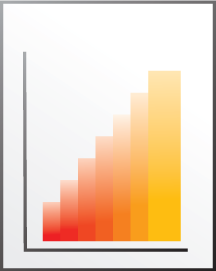Inbound Customer Engagement ~ What’s Important to Our Clients? Metrics Measured.
 Similar to our outbound contact center initiatives we manage on behalf of our clients, for our inbound clients, there are many “moving parts” which drive the measurements our clients have for us. Some of the measurements are unique to the type of interaction we manage (i.e. a sales call versus a customer service call), but the basis for most metrics is the same.
Similar to our outbound contact center initiatives we manage on behalf of our clients, for our inbound clients, there are many “moving parts” which drive the measurements our clients have for us. Some of the measurements are unique to the type of interaction we manage (i.e. a sales call versus a customer service call), but the basis for most metrics is the same.
Inbound Call Management (for ANY contact center) differs from Outbound Call Management for 2 Main Reasons:
- Call volume is unpredictable. A basic component of any inbound customer interaction center is good forecasting based on history, but it is simply that—a forecast. Inbound volumes can vary significantly for a variety of reasons outside of the control of the contact center.
- Inbound call volume cannot be dynamically managed as it can be in an outbound contact center environment. Basic daily activities like training, break time, lunch times, etc., must be very carefully planned around the expected call volume down to the 30 minute interval to avoid any undue customer impacts.
It is not uncommon for the metrics below to be directly tied to our contractual agreements with clients. We work closely with our clients during the contracting phase of any program to ensure we clearly define the metrics that are important and understand the measures for success. It’s also not uncommon for there to be contract penalties if the minimum requirements are not met, but we have the opportunity to be rewarded with incentives should we exceed expectations and remain very efficient while doing so.
Here are the most common metrics measured:
- ASA (Average Speed of Answer) – This is the average time it takes for a caller who contacts the center to reach a live representative. This is usually measured in seconds. As an example, if you hear “our ASA is 30 seconds” that means callers are waiting an average of 30 seconds before being connected with a representative. Of course some callers may speak with a representative immediately and others may wait extended periods of time; however, this metric measures what happens with the “average” caller.
- Service Level – This is percentage of callers whose call is answered within a pre-determined timeframe. As an example, if a client defines that we must answer 80% of all calls within 20 seconds, that would be the service level we would utilize in the contact center. This measure is different from ASA because it applies the overall percentage of callers answered within a specific timeframe versus the average speed at which we answer all calls.
{{cta(’98f38b19-1371-4c85-aeb1-0d6d520286d6′)}}
- Max Caller Delay – This is the maximum time the longest caller has waited to speak with a representative. As an example, at the peak hour of the day if the average speed of answer is 45 seconds and the service level is 60% answered within 20 seconds, that could mean 40% of the calls are waiting extended periods of time. The max call delay could be several minutes when call volumes spike.
- Average Talk Time – This is similar to the talk time metrics we manage on our outbound contact center programs; however, one major distinction is that Average Talk Time will be measured and monitored on an average talk time per call basis. It can be reflected in minutes or in seconds based on the individual client and their needs.
- Average Handle Time – This is the average time to handle all of the functions associated with the call. Average Handle Time comprises all of the talk time and any after call work functions that could be required when a representative would not be available to take another call. Like Average Talk Time, Average Handle Time is measured on a per call basis. Both are key metrics in a high volume inbound environment so outliers can be addressed quickly.
- Abandon Rate – There is also an abandon rate measure for inbound contact centers; however, this is the reverse of what we think of when we see abandon rates in an outbound contact center environment. Abandon rate in an inbound environment is the average percentage of callers who abandon the call in queue before speaking with an agent mainly because they have waited too long. This is a critical measure to tie with ASA (Average Speed of Answer) and Service levels. The three metrics work in conjunction with each other when determining success in an inbound contact center environment.
- After Call Work – This is the call wrap time after completion of a call with a customer. After call work time will vary from program to program based on the functions being performed and will also have a specific goal.
- Available Time – This is the time a CMR is logged into the ACD (the inbound call center system) and is available to take a call (i.e. not completing work that would prevent them from receiving calls).
- Hold Time – This is the average time a CMR places a caller on hold. Common reasons to place a caller on hold would be to seek clarification with a supervisor regarding a question, obtain information from the system, or process a transaction. Extended hold times can create customer service/satisfaction issues.
- Idle Time – This is the time a CMR is logged into the ACD but has placed themselves in a status which would make them unavailable to take a call. The similar metric in the outbound environment is “pause” time. Un-monitored or measured idle time can impact service levels and customer satisfactions quickly.
- Efficiency/Occupancy – Both terms are utilized interchangeably to designate the effectiveness of the staffing of the center. Efficiency/Occupancy is the talk/after call work time as a percentage of the total log time for each CMR. It demonstrates to our clients that we are effectively managing the representative labor pool to be as efficient as possible from a financial standpoint.
- First Call Resolution – In a customer care environment, first call resolution is a common client measurement. This metric measures the number of customers who contact the center multiple times to resolve a single issue. High first call resolution rates are an indication of efficiency and customer satisfaction.
- Sales Conversion Rate – This metric mirrors our sales conversion metrics with outbound programs. Sales Conversion Rate is sales as a percentage of the total contacts for each representative.
The same basic principles also apply in an inbound contact center environment:
- The customer interaction is first and foremost the MOST important measurement for success in any contact center.
- Most of the metrics, although they may seem “production” oriented, are to drive a much stronger, more positive and effective customer experience.
The RESULT of managing all of these metrics effectively is greater satisfaction for our clients’ customers AND our clients.
Related articles
- The Inbound Marketing Multiplier: How to Maximize Your Inbound Efforts (customerthink.com)
- Tracking Customer-Focused Metrics (customerthink.com)
- Hybrid Contact Centers: The Cloud Will Set You Free (customerthink.com)
{{cta(‘086bd7a8-05a0-4877-9c40-8458bb49ecd0’)}}
Request more info today
Tell us about your program and we'll get back to you ASAP.


